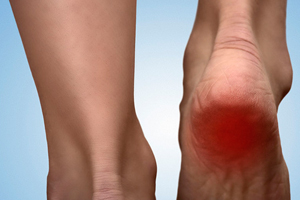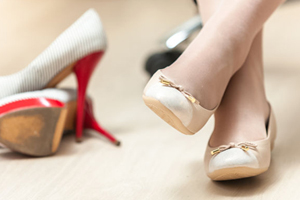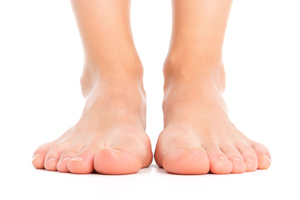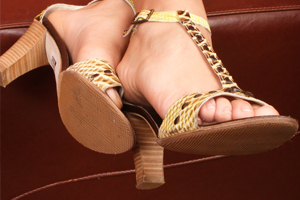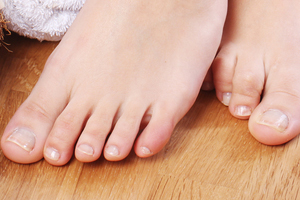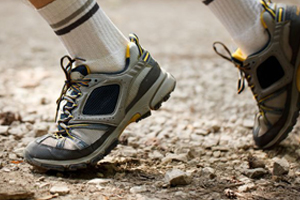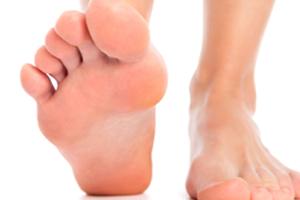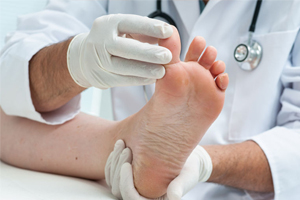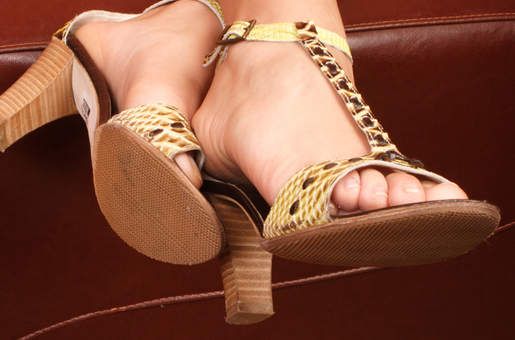
Definition:
A hammertoe is a deformity of the second, third or fourth toe. In this condition, the toe is bent at the middle joint, so that it resembles a hammer. Initially, hammertoes are flexible and can be corrected with simple measures but if left untreated, they can become fixed and require surgery.
Symptoms:
People with hammertoe may have corns or calluses on the top of the middle joint of the toe or on the tip of the toe. They may also feel pain in their toes or feet and have difficulty finding comfortable shoes.
Causes:
Hammertoe results from shoes that don't fit properly or a muscle imbalance, usually in combination with one or more other factors. Muscles work in pairs to straighten and bend the toes. If the toe is bent and held in one position long enough, the muscles tighten and cannot stretch out.
Shoes that narrow toward the toe may make your forefoot look smaller, but they also push the smaller toes into a flexed (bent) position. The toes rub against the shoe, leading to the formation of corns and calluses, which further aggravate the condition. A higher heel forces the foot down and squishes the toes against the shoe, increasing the pressure and the bend in the toe. Eventually, the toe muscles become unable to straighten the toe, even when there is no confining shoe.
Treatment:
Conservative treatment starts with new accommodative shoes that have soft, roomy toe boxes. Shoes should be one-half inch longer than your longest toe. (Note: For many people, the second toe is longer than the big toe.) Avoid wearing tight, narrow, high-heeled shoes. You may also be able to find a shoe with a deep toe box that accommodates the hammertoe. Or, a shoe repair shop may be able to stretch the toe box so that it bulges out around the toe. Sandals may help, as long as they do not pinch or rub other areas of the foot.
Your doctor may also prescribe some toe exercises that you can do at home to stretch and strengthen the muscles. For example, you can gently stretch the toes manually. You can use your toes to pick things up off the floor. While you watch television or read, you can put a towel flat under your feet and use your toes to crumple it.
Finally, your doctor may recommend that you use commercially available straps, cushions or nonmedicated corn pads to relieve symptoms. If you have diabetes, poor circulation or a lack of feeling in your feet, talk to your doctor before attempting any self-treatment.
FAQ's:
Is surgery an option for hammertoe?
Hammertoe can be corrected by surgery if conservative measures fail. Usually, surgery is done on an outpatient basis with a local anesthetic. The actual procedure will depend on the type and extent of the deformity. After the surgery, there may be some stiffness, swelling and redness and the toe may be slightly longer or shorter than before. You will be able to walk, but should not plan any long hikes while the toe heals, and you should keep your foot elevated as much as possible.
If I am treated with surgery will the hammertoe ever come back?
It is possible that after surgery your hammertoe may come back. If this happens and you have discomfort in the toe, an additional surgery may be needed to address the pain.
Yorktown Footcare Group
(914) 245-7888
2050 Saw Mill River Road
Yorktown Heights, NY 10598


